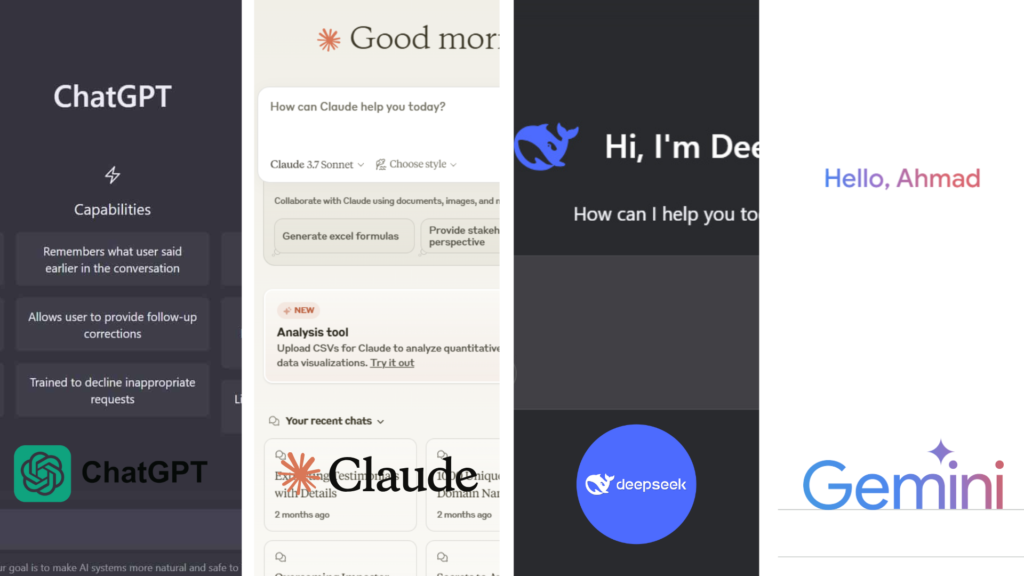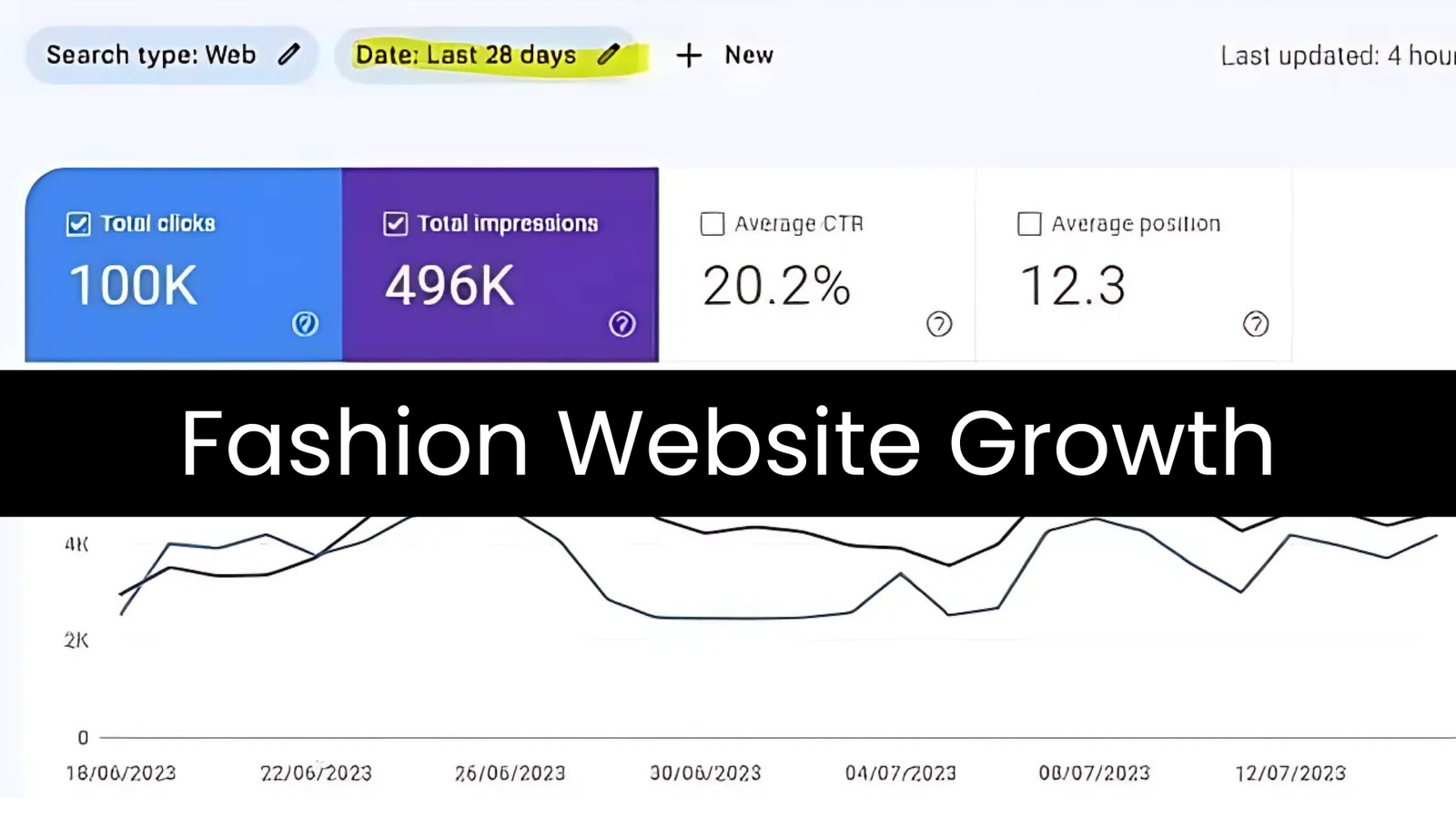The traditional ways of doing fashion SEO are gone. Google’s August 2024 core update has wiped out nearly 40% of the sites. SEO is evolving daily, and you can’t rely on just good keyword research and a good content strategy.
Fashion SEO industry is the most volatile of all other industries. Because of rapidly changing fashion trends, intense competition, high-quality content demand, and market saturation, you can’t wait for a miracle to happen and give you rankings and conversions.
This blog post contains our tried and tested strategies that’ll help you optimize your fashion website for Google so that you can get more rankings and conversions.
All you need to do is read until the end and maybe take some notes.
Let’s go.
10 Less Known (Practical + Proven) Strategies to Optime Your Fashion Website in 2025
- Optimize for Multimodal Search (Google, Bing, and Beyond)
According to Google Insights, over 50% of Gen Z prefers image-based search over text. That means search is no longer about typing some words. Users (especially young demographics) now search using images, voice, and videos.
Google and Bing prioritize websites that optimize for text, image, and video search (aka multimodal content) for higher ranking. Ignoring this shift means losing traffic to competitors who embrace it.
How to Optimize:
- Add schema markup for products, images, and videos. Google uses this to understand your content and display rich results.
- Use EXIF metadata, relevant alt text, and high-quality images to improve Google Lens and Bing Visual Search visibility.
- Optimize for featured snippets and People Also Ask (PAA) by structuring content with clear, concise answers.
You need to provide a seamless search experience to your ideal visitor across formats and your content will get rankings in search engines.
- Get Indexed by LLMs (ChatGPT, Claude, Perplexity, Gemini)

Only ChatGPT drives 35B+ monthly visits (more than Bing) and if you include other AI LLMs like Claude, Perplexity, and Gemini, that would be more than 50B searches outside Google.
Users now ask AI tools for product recommendations, styling advice, and brand information. If these models don’t index your fashion website, you’re invisible to millions of potential customers.
How to Optimize:
- Write with clear headings, bullet points, and short paragraphs. AI favors well-organized, easy-to-parse content.
- Add FAQs, original insights, and expert-backed statements to improve credibility. LLMs pull content from authoritative sources.
- Link to reputable sources when possible. AI prioritizes content with data, studies, and external references.
Being AI-discoverable is as important as ranking on Google. If your content isn’t structured for LLMs, you’re missing a significant traffic source.
- Optimize for Semantic SEO & Entity-Based Search
The structured entity markup gets 20% higher rankings. That means that Google no longer relies solely on keywords. Instead, it understands the context and relationships between entities (brands, products, designers, and styles). If your fashion website isn’t structured around entities, you’re missing out on higher rankings and richer search visibility.
How to Optimize:
- Use brand entity optimization: Implement Product, Organization, and FashionBrand schema to help search engines recognize your brand and product lines.
- Build topical clusters: Instead of targeting single keywords, structure content around themes (e.g., “Sustainable Fashion” with subtopics like “Best Vegan Leather Brands” and “Eco-Friendly Fabrics”).
- Earn brand mentions in authoritative sources: Get mentions in industry blogs, digital PR, and authoritative fashion sites to strengthen your entity’s presence.
Your website is losing traffic and conversions if you are isolately targeting keywords and not prioritizing well-structured, entity-rich content.
READ: Top 10 Retail SEO Trends to Consider in 2025 (Expert Research-Based)
- Get Higher Rankings with AI-Powered Personalization & UX Signals
Your user gets AI-driven personalized recommendations when searching for a product. And if AI recommends your product, your conversion rate will increase.
Search engines prioritize websites that keep users engaged. High dwell time, click-through rates, and interactions signal valuable content, leading to better rankings.
How to Optimize:
- Use AI-driven product recommendations: Implement personalized shopping experiences based on user behavior, past purchases, and browsing history.
- Optimize structured product listings & FAQs: Ensure your product pages answer user questions directly, reducing bounce rates and improving zero-click search visibility.
- Add interactive content: Incorporate quizzes, AR try-ons, and virtual fitting rooms to boost engagement and session duration.
Competitors will win traffic and sales if your fashion site doesn’t leverage AI-powered personalization.
- Publish E-E-A-T-Focused Content for Higher Rankings
Google’s 2024 guidelines show that “Experience” is now a key ranking factor.
Google evaluates the credibility behind it. Fashion websites that showcase experience, first-hand expertise, authority, and trustworthiness get more rankings.
Here’s how you can get this edge;
- Showcase first-hand expertise: Publish styling guides, behind-the-scenes brand stories, and expert-backed product reviews demonstrating real-world experience.
- Create exclusive, data-driven content: Google prioritizes original trend reports, case studies, and in-depth research over generic fashion advice.
- Enhance author credibility: Add detailed author bios, credentials, and external references to blog content, signaling authority and trust.
Fashion brands that invest in E-E-A-T-driven content earn more substantial rankings, more engagement, and higher conversion rates.
READ: 5 Local SEO Strategies Every Boutique Owner Should Know
- Get More Traffic & Conversions with First-Party Data & Behavioral Targeting
By the end of 2025, 80% of marketers will rely on first-party data for targeting.
That means that if third-party cookies disappear, search engines and brands must shift to first-party data for SEO and conversion rate optimization (CRO).
Websites that collect and analyze their own data improve search visibility and personalize user experiences, leading to higher engagement and sales.
Here’s how to get ahead in this regard;
- Collect first-party data smartly: Use email signups, quizzes, and loyalty programs to gather valuable customer insights.
- Leverage behavioral analytics: Track on-site interactions to refine user journeys and search intent alignment for better rankings.
- Use data for hyper-personalization: Deliver customized product recommendations and content based on visitor behavior, increasing conversions.
Brands that optimize for first-party data outperform competitors by improving SEO, user engagement, and revenue.
- Optimize Shopify & WooCommerce for Faster Rankings & Conversions
According to Google PageSpeed Insights, a 1-second faster load time increases conversions by 15%+.
So, indirectly, speed is also an SEO ranking signal. Google prioritizes fast, mobile-friendly e-commerce sites in search results. If your Shopify or WooCommerce store loads slowly, you risk lower rankings, higher bounce rates, and fewer conversions.
Here’s how you can make your site fast;
- Enhance Core Web Vitals: Ensure LCP <2.5s, FID <100ms, CLS <0.1 for better performance scores.
- Leverage Edge SEO & CDNs: Use content delivery networks (CDNs) and edge caching to speed up load times globally.
- Optimize JavaScript-heavy themes: Implement server-side rendering (SSR) to improve indexing and user experience.
Optimizing technical SEO on Shopify and WooCommerce is critical for fashion brands looking to scale in 2025.
READ: SEO for Fashion E-Commerce: A-Z Guide for 2025
- Optimize for Social Commerce SEO (FB, Instagram, Pinterest, TikTok)
Stats from Statista show that 40% of shoppers buy fashion items directly from social platforms.
Social platforms are becoming search engines. Many fashion buyers search for trends, products, and brands on Instagram, Pinterest, and TikTok before Google. You lose potential customers if your products aren’t optimized for social discovery.
Here’s how to SEO social commerce;
- Optimize product listings: Use keyword-rich descriptions and hashtags to boost visibility in social search results.
- Leverage visual search tools: Use Pinterest Lens & Instagram Alt Text to improve image-based search rankings.
- Run UGC campaigns: Encourage customers to post reviews, style inspirations, and unboxings to improve social SEO and trust.
Optimizing for social platform search engines ensures your brand stays visible where customers shop.
- Focus on Local & Hyperlocal SEO to Drive Foot Traffic
76% of “near me” searches lead to a store visit within 24 hours (Google, 2024).
Local SEO is essential if you run a fashion retail store. Before visiting in person, people search for nearby boutiques, streetwear shops, and designer stores.
So here’s how you can optimize your store for local SEO;
- Claim & Optimize Google Business Profile & Bing Places: Ensure accurate business info, categories, and high-quality images.
- Use “Near Me” Optimization: Target geo-specific keywords like “best luxury boutiques near me” in page titles and descriptions.
- Enable Click-to-Map & Click-to-Call Features: Make it easy for users to instantly find your store and contact you.
Local SEO makes sure that your brand appears in hyperlocal searches and drives real-world sales.
- Optimize for Voice Search & Conversational AI in Fashion Queries
Consumers use smart assistants (Google Assistant, Siri, Alexa) when they want to know about a product. Voice search queries are longer, more conversational, and often location-based. You won’t appear in spoken search results if your site isn’t voice-optimized.
To optimize your website for voice search;
- Target Long-Tail Conversational Queries: Use natural, question-based phrases like “Where can I buy sustainable sneakers near me?”.
- Leverage FAQs & Featured Snippets: Structure content with FAQ schema to increase chances of appearing in voice search results.
- Implement Structured Q&A Schema: Help search engines understand and pull direct answers for voice queries.
If your website isn’t conversational-friendly, you’ll miss out on emerging AI-driven search traffic.
Better SEO = More Traffic = More $$$
You just read 10 strategies that will rule fashion SEO in 2025. Did you notice one thing?
These strategies have one objective in common: to benefit and facilitate the user/customer.
SEO is evolving. Content industry is changing. But one thing will always be static: how better you can serve your user.
Do that by all means possible, and no one will beat you. Ignore it and you will ruin your business.
Please check out our services if you need help optimizing your fashion website.

